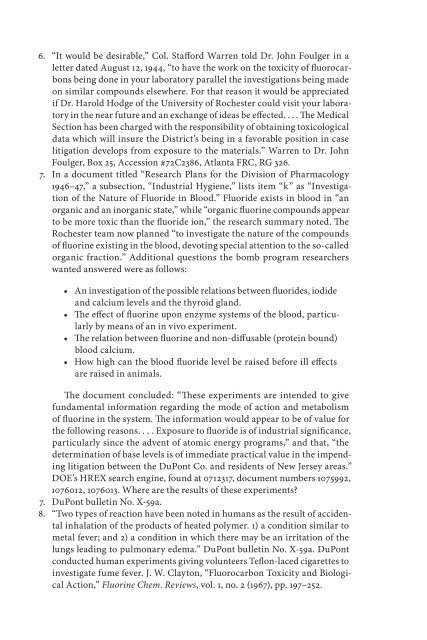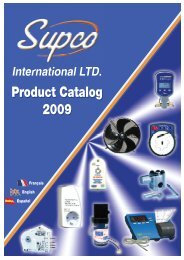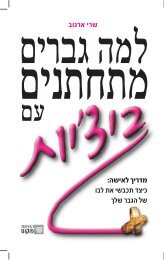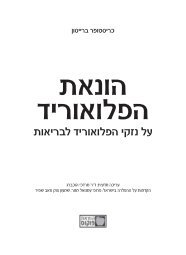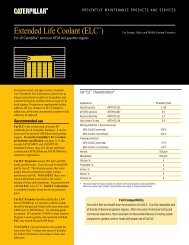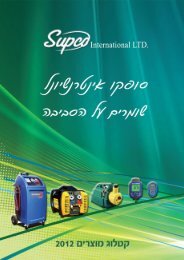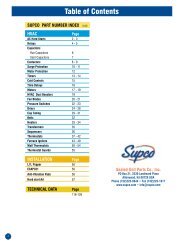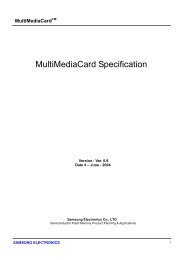Epigraphs Note on Terminology Acknowledgments Introduction
Epigraphs Note on Terminology Acknowledgments Introduction
Epigraphs Note on Terminology Acknowledgments Introduction
Create successful ePaper yourself
Turn your PDF publications into a flip-book with our unique Google optimized e-Paper software.
6. “It would be desirable,” Col. Stafford Warren told Dr. John Foulger in a<br />
letter dated August 12, 1944, “to have the work <strong>on</strong> the toxicity of fluorocarb<strong>on</strong>s<br />
being d<strong>on</strong>e in your laboratory parallel the investigati<strong>on</strong>s being made<br />
<strong>on</strong> similar compounds elsewhere. For that reas<strong>on</strong> it would be appreciated<br />
if Dr. Harold Hodge of the University of Rochester could visit your laboratory<br />
in the near future and an exchange of ideas be effected. . . . The Medical<br />
Secti<strong>on</strong> has been charged with the resp<strong>on</strong>sibility of obtaining toxicological<br />
data which will insure the District’s being in a favorable positi<strong>on</strong> in case<br />
litigati<strong>on</strong> develops from exposure to the materials.” Warren to Dr. John<br />
Foulger, Box 25, Accessi<strong>on</strong> #72C2386, Atlanta FRC, RG 326.<br />
7. In a document titled “Research Plans for the Divisi<strong>on</strong> of Pharmacology<br />
1946–47,” a subsecti<strong>on</strong>, “Industrial Hygiene,” lists item “k” as “Investigati<strong>on</strong><br />
of the Nature of Fluoride in Blood.” Fluoride exists in blood in “an<br />
organic and an inorganic state,” while “organic fluorine compounds appear<br />
to be more toxic than the fluoride i<strong>on</strong>,” the research summary noted. The<br />
Rochester team now planned “to investigate the nature of the compounds<br />
of fluorine existing in the blood, devoting special attenti<strong>on</strong> to the so-called<br />
organic fracti<strong>on</strong>.” Additi<strong>on</strong>al questi<strong>on</strong>s the bomb program researchers<br />
wanted answered were as follows:<br />
• An investigati<strong>on</strong> of the possible relati<strong>on</strong>s between fluorides, iodide<br />
and calcium levels and the thyroid gland.<br />
• The effect of fluorine up<strong>on</strong> enzyme systems of the blood, particularly<br />
by means of an in vivo experiment.<br />
• The relati<strong>on</strong> between fluorine and n<strong>on</strong>-diffusable (protein bound)<br />
blood calcium.<br />
• How high can the blood fluoride level be raised before ill effects<br />
are raised in animals.<br />
The document c<strong>on</strong>cluded: “These experiments are intended to give<br />
fundamental informati<strong>on</strong> regarding the mode of acti<strong>on</strong> and metabolism<br />
of fluorine in the system. The informati<strong>on</strong> would appear to be of value for<br />
the following reas<strong>on</strong>s. . . . Exposure to fluoride is of industrial significance,<br />
particularly since the advent of atomic energy programs,” and that, “the<br />
determinati<strong>on</strong> of base levels is of immediate practical value in the impending<br />
litigati<strong>on</strong> between the DuP<strong>on</strong>t Co. and residents of New Jersey areas.”<br />
DOE’s HREX search engine, found at 0712317, document numbers 1075992,<br />
1076012, 1076013. Where are the results of these experiments?<br />
7. DuP<strong>on</strong>t bulletin No. X-59a.<br />
8. “Two types of reacti<strong>on</strong> have been noted in humans as the result of accidental<br />
inhalati<strong>on</strong> of the products of heated polymer. 1) a c<strong>on</strong>diti<strong>on</strong> similar to<br />
metal fever; and 2) a c<strong>on</strong>diti<strong>on</strong> in which there may be an irritati<strong>on</strong> of the<br />
lungs leading to pulm<strong>on</strong>ary edema.” DuP<strong>on</strong>t bulletin No. X-59a. DuP<strong>on</strong>t<br />
c<strong>on</strong>ducted human experiments giving volunteers Tefl<strong>on</strong>-laced cigarettes to<br />
investigate fume fever. J. W. Clayt<strong>on</strong>, “Fluorocarb<strong>on</strong> Toxicity and Biological<br />
Acti<strong>on</strong>,” Fluorine Chem. Reviews, vol. 1, no. 2 (1967), pp. 197–252.


